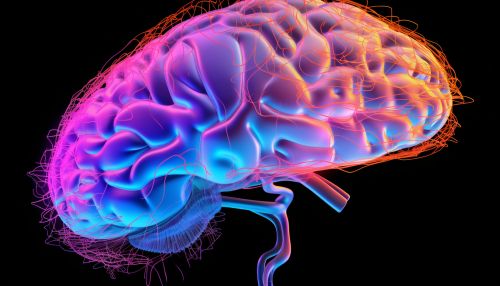Cognitive Neuroscience of Sensory Processing
Introduction
Cognitive neuroscience is a branch of neuroscience that studies the biological processes that underlie cognition, especially those involving the brain. The focus of this article is on the cognitive neuroscience of sensory processing, which is the way the nervous system receives, interprets, and responds to sensory information. Sensory processing involves multiple cognitive processes, including attention, perception, memory, and decision-making, all of which are mediated by the brain's complex network of neurons.


Sensory Systems and the Brain
The human sensory system is composed of five primary senses: sight, hearing, touch, taste, and smell, each of which has a corresponding sensory organ: the eyes, ears, skin, tongue, and nose, respectively. These sensory organs contain receptors that respond to specific types of stimuli, such as light, sound waves, pressure, chemicals, and temperature. The information from these receptors is then transmitted to the brain via sensory neurons, where it is processed and interpreted.
The brain is divided into several regions, each of which is responsible for processing information from a specific sensory system. For example, the visual information is processed in the visual cortex, auditory information in the auditory cortex, somatosensory information in the somatosensory cortex, gustatory information in the gustatory cortex, and olfactory information in the olfactory bulb and piriform cortex.
Neural Mechanisms of Sensory Processing
Sensory processing in the brain involves a complex network of neural circuits and pathways. The primary sensory areas of the brain receive raw sensory input and perform basic processing tasks, such as detecting the presence of a stimulus and determining its basic attributes. This information is then sent to secondary sensory areas and association areas, where it is integrated with other sensory and cognitive information to form a coherent perception of the environment.
The neural mechanisms underlying sensory processing are highly complex and involve a variety of processes, including neural coding, neural synchronization, neural plasticity, and neural oscillation. These processes allow the brain to encode sensory information, synchronize neural activity, adapt to changes in the environment, and coordinate activity across different brain regions.
Cognitive Aspects of Sensory Processing
Sensory processing is not a passive process, but rather an active one that involves a variety of cognitive processes. These include attention, perception, memory, and decision-making.
Attention is the cognitive process that allows us to focus our mental resources on specific stimuli or aspects of stimuli. It plays a crucial role in sensory processing by filtering out irrelevant sensory information and enhancing the processing of relevant information.
Perception is the process by which we interpret sensory information and make sense of our environment. It involves a variety of cognitive processes, including pattern recognition, object recognition, and scene analysis.
Memory plays a crucial role in sensory processing by allowing us to store and retrieve sensory information. This enables us to recognize familiar stimuli, remember past experiences, and learn from our environment.
Decision-making is the process by which we choose between different courses of action based on sensory information. It involves a variety of cognitive processes, including evaluation, selection, and execution.
Research Methods in Cognitive Neuroscience of Sensory Processing
Research in the cognitive neuroscience of sensory processing involves a variety of methods, including neuroimaging, electrophysiology, and behavioral experiments.
Neuroimaging techniques, such as functional magnetic resonance imaging (fMRI) and positron emission tomography (PET), are used to visualize brain activity during sensory processing. These techniques provide valuable information about the brain regions involved in sensory processing and their functional connectivity.
Electrophysiology techniques, such as electroencephalography (EEG) and magnetoencephalography (MEG), are used to measure the electrical activity of neurons during sensory processing. These techniques provide valuable information about the timing and synchronization of neural activity.
Behavioral experiments are used to study the cognitive aspects of sensory processing. These experiments typically involve presenting participants with sensory stimuli and measuring their responses, such as reaction times, accuracy rates, and subjective ratings.
Conclusion
The cognitive neuroscience of sensory processing is a rapidly evolving field that seeks to understand the neural mechanisms underlying our ability to perceive and interact with the world around us. By combining insights from neuroscience, psychology, and cognitive science, researchers in this field are shedding light on the complex interplay between the brain, the senses, and cognition.
